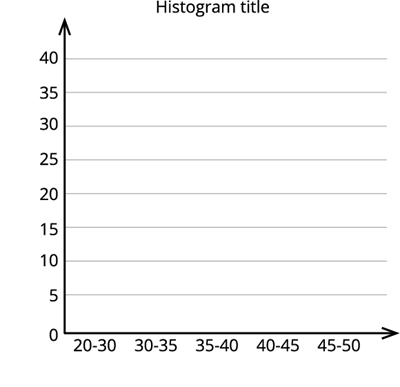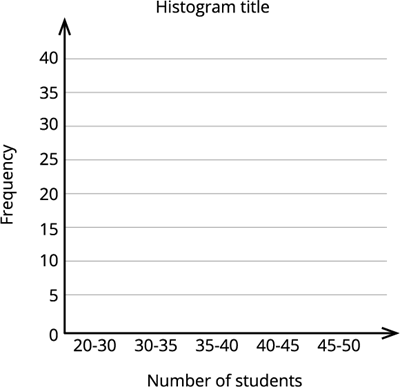PDF chapter test TRY NOW
Let us consider the data table given below and try to construct a histogram step-by-step.
Problem:
A private organization surveyed hundred schools in Chennai. The organization collected the average number of kindergarten children in each classroom.
The data table looks like this:
Number of students | \(25\) - \(30\) | \(30\) - \(35\) | \(35\) - \(40\) | \(40\) - \(45\) | \(45\) - \(50\) |
Frequency | \(15\) | \(35\) | \(18\) | \(25\) | \(7\) |
Now, let us try to construct a histogram.
Step \(1\): Set and mark the units for \(X\)-axis and \(Y\)-axis.
Here, the axes will look like this:

Step \(2\): Now mark the class intervals (Number of students) along the \(X\)-axis and the frequency along the \(Y\)-axis.

Step \(3\): Now, construct rectangles with class intervals (number of students) as the base and the frequency as the height.

